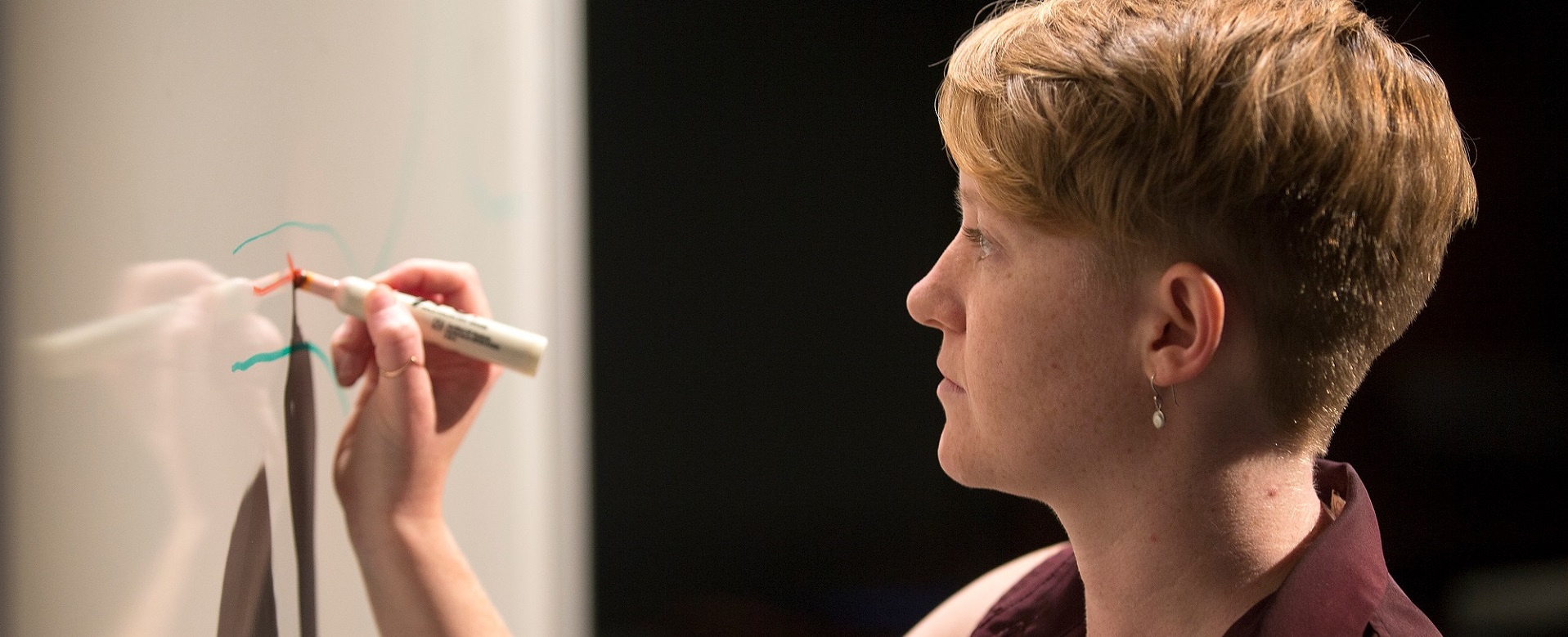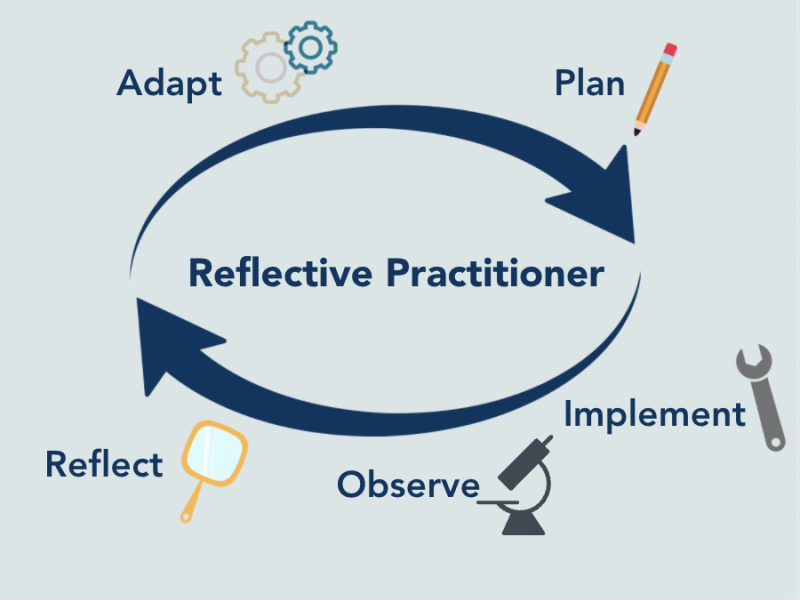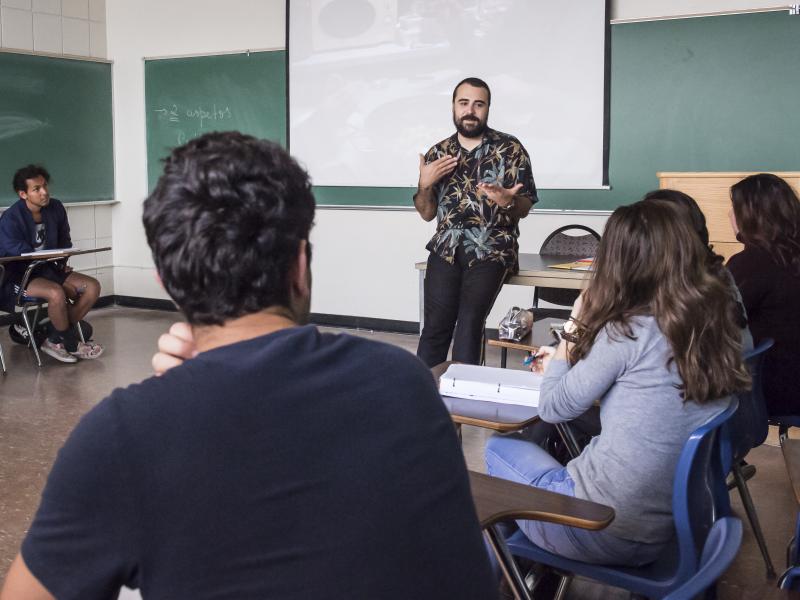
To evaluate your teaching holistically, you should draw on multiple sources of evidence and look for trends about what’s working and what can be improved. This holistic approach encourages you to continuously adjust and iterate your courses, and promotes success for UCSB’s diverse community of learners.
As an instructor or TA, you can become a reflective practitioner as you refine your teaching through the cyclical process of planning, implementing, observing, reflecting, and adapting instruction.
- Plan - Use your teaching philosophy values, experience, and ideas for adaptation to organize your ideas and identify how you will know that your plans are “working”.
- Implement - Put your plans into practice. Be intentional about your teaching strategies.
- Observe - Use different sources of evidence to find out what’s happening in students’ learning and your teaching - don’t solely rely on your feelings or impressions.
- Reflect - Analyze the evidence to find trends and themes. What “worked”? What needs to be changed?
- Adapt - Use insights from your reflections to adjust your teaching.

Guiding principles for teaching evaluation
Reflective teaching practitioners use the following three principles to learn what aspects of their teaching are working well and where to focus their refinements.
1. Treat teaching as a research experiment
Think of your teaching as a longitudinal research experiment - something that you come to understand over time and that you become progressively more adept at doing through a series of formal and informal experiments, insightful moments, and a lot of mistakes. Teaching is messy and imperfect, but if you approach each class as an experiment, you can purposefully collect evidence to draw conclusions about what helped and hindered student learning both in the moment and over time. As a reflective teaching practitioner, you use research-based teaching that is cyclical to continuously adapt your teaching for student success.


2. Evaluate teaching using multiple sources of feedback
Brookfield (1995) describes four lenses for evaluating teaching: students, self-reflection, peers, and research on teaching and learning. When only one source of evidence is used, the evaluation is less reliable and more subject to bias. For example, overreliance on students’ evaluation of teaching as the primary source of evidence leaves instructors more vulnerable to the widely documented bias against women and people of color (Anderson and Smith, 2005; Basow, et al., 2013; Bavishi, et al., 2010; MacNell, et al., 2015; Smith and Hawkins, 2011; Spooren, et al., 2015).
3. Document the evolution of your teaching
To document how you have refined your teaching over time, recall your own philosophy about how students learn (e.g. your Teaching Philosophy Statement), then consider how the structure of your course embodies that philosophy. For example, how have your policies, content, assessment strategies, learning activities, and/or interactions with students changed over time and why? What evidence can you gather to help reveal those changes and how they affect and support student learning?

Defining “Effective Teaching” at UCSB
To help UCSB instructors evaluate their own teaching, the UCSB Teaching Practices Framework defines 7 different practices associated with “effective teaching” that can be useful to help frame your Teaching Statement (or Teaching Philosophy Statement). These are: alignment, inclusive pedagogy and curriculum, fostering student agency, implementing instructional strategies, growth, mentoring, and long-term impacts. Research suggests that these high-impact practices support student learning and teaching professional development, and they are consistent with other frameworks that define effective teaching.
UCSB Teaching Practices Framework
We can help you!
- Contact us at oic@id.ucsb.edu for individualized and departmental support for teaching evaluation.
- Come to a workshop on writing teaching philosophy statements or interpreting course evaluation reports.
- Invite us to do a non-evaluative, confidential classroom observation and consultation (for instructors).
- Use the video recording and consultation service (for TAs).
- Invite us to do a workshop or consultation about interpreting and revising ESCI surveys (for TAs, instructors and departments).
Invite us to do a departmental workshop on customizing the UCSB Teaching Practices Framework or departmental course evaluation questions to support departmental evaluation of teaching.
Anderson, K. J., & Smith, G. (2005). Students’ preconceptions of professors: Benefits and barriers according to ethnicity and gender. Hispanic Journal of Behavioral Sciences, 27(2), 184-201.
Basow, S., Codos, S., & Martin, J. (2013). The effects of professors' race and gender on student evaluations and performance. College Student Journal, 47(2), 352-363.
Bavishi, A., Madera, J. M., & Hebl, M. R. (2010). The effect of professor ethnicity and gender on student evaluations: Judged before met. Journal of Diversity in Higher Education, 3(4), 245.
Brookfield, S. (1995) Becoming a Critically Reflective Teacher. San Francisco: Jossey Bass.
MacNell, L., Driscoll, A., & Hunt, A. N. (2015). What’s in a name: Exposing gender bias in student ratings of teaching. Innovative Higher Education, 40(4), 291-303.
Smith, B. P., & Hawkins, B. (2011). Examining student evaluations of Black college faculty: Does race matter?. Journal of Negro Education, 80(2).
Spooren, P., Brockx, B., & Mortelmans, D. (2013). On the validity of student evaluation of teaching: The state of the art. Review of Educational Research, 83(4), 598-642.
Wieman and Gilberts’ Teaching Practices Inventory
University of Kansas’ Benchmarks for Teaching Effectiveness
Colorado State University’s Teaching Effectiveness Framework